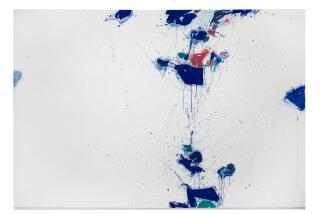LA CIENEGA AREA
As a young woman whoâd migrated from her home in Illinois to New York City, Dorothea Tanning was mightily impressed by the Museum of Modern Artâs landmark exhibition of 1936, âFantastic Art, Dada, Surrealism.â âIt was like lightning striking,â recalls the artist, now 76. Lightning obviously struck Tanning a second time in 1942 when she met modernist master Max Ernst, whom she subsequently married.
Lapis Press recently published her sharply observed memoir of her husband (who died in 1976), and the book--titled âBirthdayâ--will probably ensure that Tanningâs place in history will be next to her husband. She is, however, an accomplished Surrealist painter in her own right; a mini-retrospective of her work of the last 25 years offers ample proof of that.
Tanningâs aesthetic is intensely feminine, yet the work is refreshingly free of the browbeaten bitterness and sugar-sweet coquetry that afflicts much feminist work. Favoring a sensual palette, she paints with a loose, impressionistic touch and imbues her Rubenesque ladies with glowing radiance.
In âMean Frequency of Auroras,â we see a celestial cluster of women who appear to be lounging on a crescent moon. Itâs a rather cosmic and gaseous picture, and her work does occasionally go a bit soggy with mysticism; at the same time, thereâs undeniable strength and control about Tanningâs pictures. Reserved and inscrutable, theyâre a bit tough, leavened as they are with the wicked humor youâd expect of one whoâd spent her life with a Dada master.
A pair of reclining maidens in a picture called âSequestariansâ look alarmingly vampiric, while a work titled âFaith, Surrounded by Hope, Charity and Other Monstersâ lets us know that Tanning is no wide-eyed Polyanna. Having fallen prey to the tricks of life and survived, she chooses to allow herself to be slightly enchanted by them nonetheless. (Feingarten Gallery, 8380 Melrose Ave., to June 30.)
More to Read
The biggest entertainment stories
Get our big stories about Hollywood, film, television, music, arts, culture and more right in your inbox as soon as they publish.
You may occasionally receive promotional content from the Los Angeles Times.










